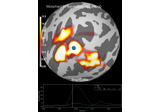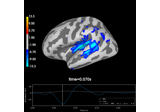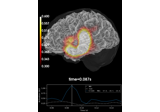mne.SourceMorph#
- class mne.SourceMorph(subject_from, subject_to, kind, zooms, niter_affine, niter_sdr, spacing, smooth, xhemi, morph_mat, vertices_to, shape, affine, pre_affine, sdr_morph, src_data, vol_morph_mat, *, verbose=None)[source]#
Morph source space data from one subject to another.
Note
This class should not be instantiated directly via
mne.SourceMorph(...). Instead, use one of the functions listed in the See Also section below.- Parameters:
- subject_from
str|None Name of the subject from which to morph as named in the SUBJECTS_DIR.
- subject_to
str|array|listofarray Name of the subject on which to morph as named in the SUBJECTS_DIR. The default is ‘fsaverage’. If morphing a volume source space, subject_to can be the path to a MRI volume. Can also be a list of two arrays if morphing to hemisphere surfaces.
- kind
str|None Kind of source estimate. E.g.
'volume'or'surface'.- zooms
float|tuple - niter_affine
tupleofint Number of levels (
len(niter_affine)) and number of iterations per level - for each successive stage of iterative refinement - to perform the affine transform.- niter_sdr
tupleofint Number of levels (
len(niter_sdr)) and number of iterations per level - for each successive stage of iterative refinement - to perform the Symmetric Diffeomorphic Registration (sdr) transform [1].- spacing
int|list|None - smooth
int|str|None - xhemibool
Morph across hemisphere.
- morph_mat
scipy.sparse.csr_array The sparse surface morphing matrix for spherical surface based morphing [2].
- vertices_to
listofndarray The destination surface vertices.
- shape
tuple The volume MRI shape.
- affine
ndarray The volume MRI affine.
- pre_affineinstance of
dipy.align.AffineMap The transformation that is applied before the before
sdr_morph.- sdr_morphinstance of
dipy.align.DiffeomorphicMap The class that applies the the symmetric diffeomorphic registration (SDR) morph.
- src_data
dict Additional source data necessary to perform morphing.
- vol_morph_mat
scipy.sparse.csr_array|None The volumetric morph matrix, if
compute_vol_morph_mat()was used.- verbosebool |
str|int|None Control verbosity of the logging output. If
None, use the default verbosity level. See the logging documentation andmne.verbose()for details. Should only be passed as a keyword argument.
- subject_from
Methods
apply(stc_from[, output, mri_resolution, ...])Morph source space data.
compute_vol_morph_mat(*[, verbose])Compute the sparse matrix representation of the volumetric morph.
save(fname[, overwrite, verbose])Save the morph for source estimates to a file.
See also
Notes
New in v0.17.
References
- apply(stc_from, output='stc', mri_resolution=False, mri_space=None, verbose=None)[source]#
Morph source space data.
- Parameters:
- stc_from
VolSourceEstimate|VolVectorSourceEstimate|SourceEstimate|VectorSourceEstimate The source estimate to morph.
- output
str Can be
'stc'(default) or possibly'nifti1', or'nifti2'when working with a volume source space defined on a regular grid.- mri_resolutionbool |
tuple|int|float If True the image is saved in MRI resolution. Default False.
- mri_spacebool |
None Whether the image to world registration should be in mri space. The default (None) is mri_space=mri_resolution.
- verbosebool |
str|int|None Control verbosity of the logging output. If
None, use the default verbosity level. See the logging documentation andmne.verbose()for details. Should only be passed as a keyword argument.
- stc_from
- Returns:
- stc_to
VolSourceEstimate|SourceEstimate|VectorSourceEstimate|Nifti1Image|Nifti2Image The morphed source estimates.
- stc_to
Examples using
apply: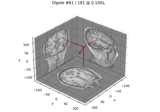
Compute sparse inverse solution with mixed norm: MxNE and irMxNE
Compute sparse inverse solution with mixed norm: MxNE and irMxNE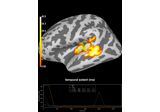
2 samples permutation test on source data with spatio-temporal clustering
2 samples permutation test on source data with spatio-temporal clustering
- compute_vol_morph_mat(*, verbose=None)[source]#
Compute the sparse matrix representation of the volumetric morph.
- Parameters:
- verbosebool |
str|int|None Control verbosity of the logging output. If
None, use the default verbosity level. See the logging documentation andmne.verbose()for details. Should only be passed as a keyword argument.
- verbosebool |
- Returns:
- morphinstance of
SourceMorph The instance (modified in-place).
- morphinstance of
Notes
For a volumetric morph, this will compute the morph for an identity source volume, i.e., with one source vertex active at a time, and store the result as a
sparsemorphing matrix. This takes a long time (minutes) to compute initially, but drastically speeds upapply()for STCs, so it can be beneficial when many time points or many morphs (i.e., greater than the number of volumetricsrc_fromvertices) will be performed.When calling
save(), this sparse morphing matrix is saved with the instance, so this only needs to be called once. This function does nothing if the morph matrix has already been computed, or if there is no volume morphing necessary.New in v0.22.
Examples using
compute_vol_morph_mat:
- save(fname, overwrite=False, verbose=None)[source]#
Save the morph for source estimates to a file.
- Parameters:
- fnamepath-like
The path to the file.
'-morph.h5'will be added if fname does not end with'.h5'.- overwritebool
If True (default False), overwrite the destination file if it exists.
- verbosebool |
str|int|None Control verbosity of the logging output. If
None, use the default verbosity level. See the logging documentation andmne.verbose()for details. Should only be passed as a keyword argument.
Examples using
save:
Examples using mne.SourceMorph#

Compute sparse inverse solution with mixed norm: MxNE and irMxNE

2 samples permutation test on source data with spatio-temporal clustering
